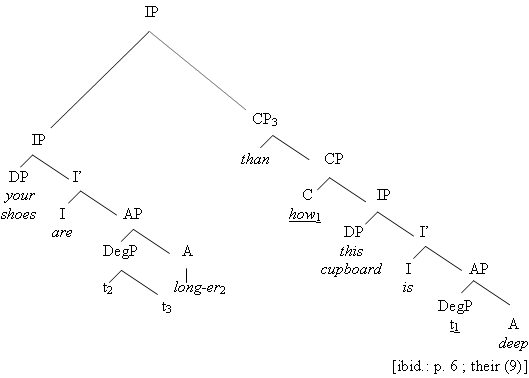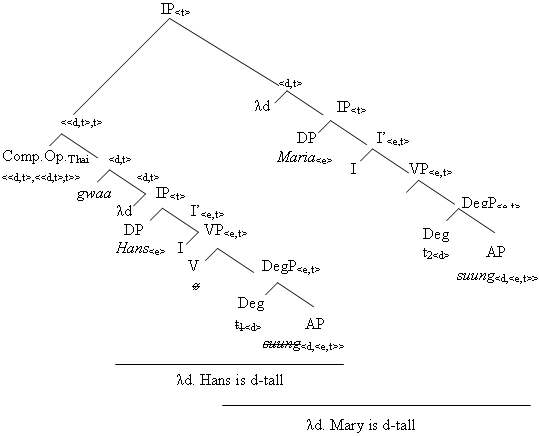In a second step, I have then investigated possible ambiguities with potentially ambiguous sentences, the grammatical status of which had been established as completely uncontroversial beforehand, in that I have manipulated contexts and asked my informants to what extent they were willing to accept a test sentence in the context at hand on an analogous acceptability scale, once again involving judgments between “1” and “4”, an exemplary case of which will be shown with example (23) to be dealt with in subsection 2.2. As a matter of fact, checking for ambiguities by examining the appropriateness conditions of a given sentence constitutes an integral part of such an empirical investigation, because their respective occurrence or absence has far-reaching theoretical consequences, as will become clear in subsection 3.2.3 below. In what follows, I shall next summarise (a very limited number of) the results achieved from this study on comparison in Thai.
2.2 An Overview of Various Thai Comparison Constructions
Let me begin my little survey of the individual comparison constructions attested in the Thai language with the four construction types that are usually considered to be basic: the comparative, the positive, the equative and the superlative. In Thai, a standard comparative is formed by the comparee term (Maria in (2a) below), followed by a gradable predicate (suung in the case at hand), which is in turn followed by a combination of the element gwaa and the standard term of the comparison (Hans):3

A canonical Thai positive consists in nothing but a comparee term and the gradable predicate itself, as can be seen from (3) below, and an equative is usually marked by the element thao (cf. (4)):


And Thai superlatives are typically characterised by a construction in which the relative pronoun thee both precedes and follows the respective gradable predicate and that is finally completed by the element soot, as illustrated in examples (5) and (6) below:


















































